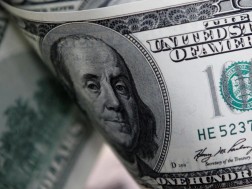Galt&Taggart published Global Markets Weekly Update. According to the report:
Stock Market Overview:
Wall Street closed the week with notable gains, marking a five-week winning streak for the first time since May. The S&P 500 hit a milestone by surpassing the 5,800-point level, and the Dow Jones Industrial Average is nearing the 43,000-point mark. This upward trend persisted despite concerns over rising tensions in the Middle East, higher-than-expected consumer inflation, and shifting expectations around Federal Reserve interest rate cuts.
The Federal Reserve's recent meeting minutes, released on Wednesday, revealed a strong consensus among policymakers for a half-point interest rate cut, signaling the start of an easing cycle—the first since the pandemic. Inflation dominated the conversation later in the week, as consumer prices rose more than anticipated, but producer price data came in cooler than expected, tempering some inflation fears.
The strong performance of major banks in their quarterly results also contributed to the market's resilience. Looking ahead, the earnings season will accelerate next week, with more high-profile companies expected to report their results.
For the week, both the S&P 500 and Nasdaq Composite gained 1.1%, while the Dow Jones climbed 1.2%.
JPMorgan & Wells Fargo:
The third-quarter earnings season for major banks kicked off with strong performances from JPMorgan Chase (JPM) and Wells Fargo (WFC). These two financial giants exceeded analyst expectations, demonstrating resilience in the face of economic challenges.
JPMorgan Chase reported strong third-quarter results, surpassing expectations for both profit and revenue. Earnings were $4.37 per share against an expected $4.01, and revenue reached $43.32 billion, up 6% year-over-year. Key growth drivers included net interest income of $23.5 billion, boosted by investments and credit card loans, and a 31% rise in investment banking fees. Despite rising profits, the company faces challenges from geopolitical risks and regulatory changes. JPMorgan also raised its 2024 net interest income forecast to $92.5 billion, while shares rose 5%.
Wells Fargo's third-quarter earnings exceeded expectations, with adjusted earnings per share of $1.52 versus the expected $1.28. Despite a significant 11% drop in net interest income to $11.69 billion due to higher funding costs, the bank reported revenue of $20.37 billion, close to estimates. Net income fell to $5.11 billion from $5.77 billion a year earlier. CEO Charles Scharf highlighted the bank's strategic shift toward more diverse revenue sources, with fee-based revenue offsetting the decline in net interest income. Shares rose over 6% throughout the week.
When financials do well, this is what a soft landing looks like. It's a positive overall sign for the economy and sets a positive tone for earnings releases in other industries in the next few weeks.
Corporate News:
Tesla
At the recent "We, Robot" event in Burbank, California, Elon Musk unveiled the much-anticipated Cybercab, a futuristic robotaxi devoid of traditional controls like steering wheels and pedals. Positioned to cost under $30,000, the Cybercab reflects Musk's vision for a future dominated by fully autonomous vehicles capable of generating income through ride-sharing. Despite the excitement surrounding the launch, investor confidence waned, leading to an 8% drop in Tesla's stock price post-announcement. Analysts are skeptical about Musk's timeline for production, projected to begin before 2027, citing Tesla's historical struggles to meet deadlines and questioning the feasibility of achieving the target price without external subsidies.
In addition to the Cybercab, Musk showcased a larger vehicle prototype called the Robovan, designed to transport up to 20 passengers. However, the event fell short of expectations, as investors and analysts sought more concrete details regarding the deployment of the robotaxis and the challenges associated with regulatory approvals. Concerns about the safety of Tesla's self-driving technology, particularly its reliance on cameras over more advanced radar or Lidar systems, have also been raised. Despite these doubts, Musk remains optimistic, believing that Tesla's artificial intelligence, trained on vast amounts of driving data, will ultimately lead to safe and efficient autonomous driving.
Overall, while the event highlighted ambitious advancements in autonomous transportation and Tesla's broader vision, the skepticism surrounding production timelines, pricing, and safety assurances suggests that significant hurdles remain before the Cybercab and its autonomous capabilities can become a reality.
Uber:
Uber’s stock hit a record high of $82.47, reflecting a 69.58% increase over the past year due to its strategic growth and post-pandemic recovery. Analysts, including BMO Capital and Truist Securities, maintained their bullish outlooks, citing strong demand and a $92 to $99 price target range, despite potential competition from Tesla’s upcoming CyberCab. Uber’s partnerships with autonomous tech firms like Waymo and WeRide demonstrate its commitment to innovation. Strong financials, including positive operating income and a $7 billion buyback program, further support investor optimism and long-term growth prospects.
The company’s revenue grew by 15.93% in the most recent quarter, and its net income is projected to grow further. This aligns with key metrics such as its $163.71 billion market capitalization, underscoring its market dominance. Although Uber faces legal challenges concerning driver classification, its strong financial foundation and expansion in the autonomous vehicle space are expected to drive future profitability. The stock’s current performance reflects its undervaluation relative to projected earnings growth, signaling potential for continued gains.
Tesla’s highly anticipated robotaxi unveiling initially posed a threat to Uber’s ride-sharing business, but the event turned out to be beneficial for Uber’s stock. Despite earlier investor excitement hurting Uber’s stock in August and September, renewed confidence in the company's autonomous vehicle potential boosted shares by over9% on Friday, pushing it to a 52-week high. This marked a major rebound, with Uber stock now up nearly 22% for the past month and about 38% year-to-date. The analyst maintained a buy rating on Uber, predicting a 28% rise in its stock.
Looking ahead, Uber is well-positioned to benefit from the autonomous vehicle market, potentially expanding its ride-sharing service with lower-cost autonomous rides.
Analysts believe autonomous vehicle developers will likely partner with ride-sharing platforms like Uber for fleet management and logistics, allowing Uber to sustain growth in this space. While Tesla appears intent on developing its robotaxi fleet independently, experts suggest it may need to collaborate with companies like Uber andLyft to scale successfully.
The Calendar:
Next week, investors will closely monitor the retail sales and industrial production reports to assess the state of the economy ahead of the Federal Reserve’s upcoming policy meeting on November 7. Current options trading indicates a 90% chance of a 25-point rate cut, despite some mixed economic signals.
The earnings season will remain in full swing, with major companies like Netflix, Procter & Gamble, and Taiwan Semiconductor set to report. Additionally, the healthcare sector will draw attention as UnitedHealth, Johnson & Johnson, and Abbott Laboratories prepare to release their quarterly results.
Earnings spotlight: Tuesday, October 15 - Charles Schwab (SCHW), UnitedHealth Group (UNH), Johnson & Johnson (JNJ), Bank of
America (BAC), Goldman Sachs (GS), Citigroup (C), Rio Tinto (RIO), PNC Financial (PNC), State Street (STT), Walgreens Boots Alliance (WBA), and United Airlines (UAL).
Earnings spotlight: Wednesday, October 16 - Morgan Stanley (MS)
Earnings spotlight: Thursday, October 17 - Netflix (NFLX)
Earnings spotlight: Friday, October 18 - Procter & Gamble (PG), American Express (AXP)
Japan
Japan's Stock Markets Rise Amid Yen Weakness, Wage Decline Clouds Rate Hike Prospects
Japan’s stock markets saw gains this week, with the Nikkei 225 Index climbing 2.45% and the broader TOPIX Index up 0.45%. A weaker yen, which hovered in the high-JPY 148 range against the U.S. dollar, boosted the profit outlook for Japanese exporters. The yen's weakness followed remarks from Japan’s new prime minister, Shigeru Ishiba, who cautioned against an immediate interest rate hike, signaling a supportive environment for export-driven growth.
In the bond markets, Japanese government bond (JGB) yields rose in tandem with U.S. Treasury yields. The yield on the 10-year JGB increased to 0.94%, reflecting market skepticism over a significant Federal Reserve rate cut in November.
On the economic front, Japan’s real wages declined 0.6% year over year in August, marking the first drop in three months. This decline, partly attributed to diminishing summer bonuses, raises doubts about a sustained wage growth cycle that could drive consumer spending. While household spending fell 1.9% year over year, the decrease was smaller than anticipated, adding to the uncertainty around the Bank of Japan’s (BoJ) next move on interest rates. BoJ policymakers emphasized that rate decisions would depend on economic performance, maintaining a flexible stance in the current environment.
China
Chinese Stocks Fall Amid Waning Stimulus Optimism, Holiday Spending Disappoints
Chinese equities tumbled in a holiday-shortened week as optimism about Beijing's stimulus measures faded. The Shanghai Composite Index dropped 3.56%, while the CSI 300 Index fell 3.25%. In Hong Kong, the Hang Seng Index suffered a steep decline of 6.53%. Markets
in mainland China were closed on Monday for the National Day holiday.
China’s National Development and Reform Commission announced plans to accelerate countercyclical measures aimed at supporting economic growth. The measures include increased investment and direct aid for low-income groups and new graduates. The government also plans to continue issuing special sovereign bonds in 2025 to finance large-scale projects, alongside an investment of RMB 100 billion in strategic sectors.
The People's Bank of China introduced a RMB 500 billion swap facility to provide liquidity to institutional investors, allowing nonbank financial institutions to access highly liquid assets like government bonds in exchange for collateral. This move is part of a broader stimulus package unveiled in late September, which included interest rate cuts designed to revitalize the struggling economy.
Consumer spending during the National Day holiday lagged behind pre-pandemic levels. While passenger traffic rose 5.9% and spending increased by 6.3% year on year, box office sales fell from RMB 2.7 billion to RMB 2.1 billion compared to last year. However, average daily spending per trip saw a modest increase from RMB 113 in May to RMB 131.
















